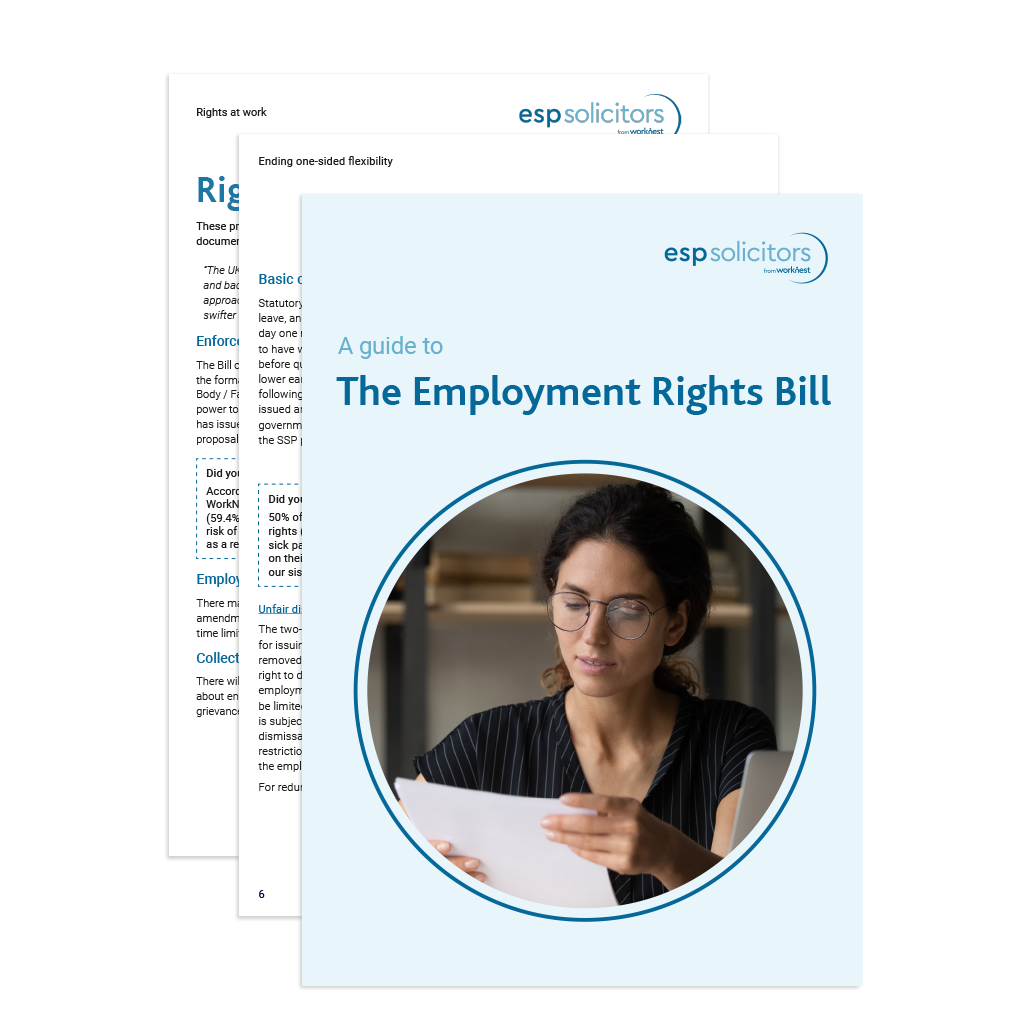Your guide to what’s coming when
The Employment Law Bill promises the biggest shake-up of UK employment law in decades. Having recently cleared the Committee Stage, one of the questions we’re hearing most from employers is: “When will these changes actually come into effect?”
The good news is that the government has now published its official Implementation Roadmap, which sets out an initial phased plan for rolling out the changes – giving employers a much clearer picture of what’s coming when, and crucially, time to prepare.
So, what’s the main takeaway?
Although the Bill introduces wide-ranging reforms, most of the bigger changes are still some way off. Only a small number are scheduled for 2025 – likely a welcome breather for employers and busy HR teams.
Perhaps most notably, one of the headline measures – day one unfair dismissal rights – is earmarked for 2027, much later than many had expected.
Some reforms – such as the proposed “light-touch” dismissal process and new guaranteed hours regime – remain subject to consultation. So while the Roadmap offers structure, key details are still being worked out, and timelines may yet shift.
Overall, though, for employers overwhelmed by the idea of adapting to 28 individual reforms, this phased rollout offers a valuable opportunity to plan ahead, engage in the consultation process, and prepare for these changes in a structured and informed way.
What’s happening when?
Some changes could come into effect very soon after the Bill receives Royal Assent – expected to happen around the end of September or early October 2025 – while others will be introduced gradually through to 2027 and beyond.
This staggered timetable will help employers prioritise their preparations by focusing first on the most imminent reforms before tackling longer-term changes.
Here’s a simplified breakdown to help you prioritise:
Imminent (on or within two months of Royal Assent – likely late 2025)
- Repeal of the Strikes (Minimum Service Levels) Act 2023 and major parts of the Trade Union Act 2016
- Removal of the 10-year ballot requirement for Trade Union political funds
- Simplified industrial action and ballot notice requirements
- New protections against dismissal for participating in industrial action
April 2026
- Day one rights for paternity and unpaid parental leave
- Statutory Sick Pay (SSP) Removal of lower earnings limit and waiting period for
- Establishment of the new Fair Work Agency
- Redundancy protective award period extended (from 90 to 180 days)
- Enhanced whistleblowing protections
- Simplified Trade Union recognition process
October 2026
- Ban on fire and rehire practices
- New employer duty to take “all reasonable steps” to prevent sexual harassment and prevent third-party harassment
- Tribunal claim window extended (from three to six months)
- Strengthened Trade Union access rights
2027
- Day one unfair dismissal rights
- Enhanced protections for pregnant employees and new mothers
- Ban on exploitative zero-hour contracts
- Flexible working becomes the default
- Bereavement leave extended to all employees
- Mandatory gender pay gap action plans (not just reporting)
What should employers be doing now?
Despite all the buzz surrounding the Employment Rights Bill, 2025 is now shaping up to be a relatively quiet year for employment law, giving employers some welcome breathing space. That said, organisations facing potential industrial action should stay alert to the Trade Union-related measures, which are being fast-tracked for early implementation.
While there will be little actual change, 2025 will be a busy year for consultations – though, key details still need to be clarified – like what the “light-touch” dismissal process will actually involve, and how many hours must be guaranteed to avoid falling under the new regime. These consultations will be vital in shaping the final legislation, so employers and HR teams should keep a close eye on developments and be ready to adapt accordingly.
From 2026 onwards, the pace of change will pick up significantly as a range of important reforms kick in.
Of note, employers planning restructuring or redundancies should be alert to the fact that the protective award for failing to carry out collective consultation will double in April 2026, significantly increasing the risk of sidestepping these duties. However, the proposed change to the collective consultation trigger – adding a new test alongside the current ‘20 redundancies in 90 days’ rule – isn’t expected until 2027, providing some short-term flexibility.
Additionally, late 2026 will see the government’s ban on controversial fire and rehire practices come into effect, removing a commonly used mechanism for implementing contractual changes. This gives employers just over a year to review and, if necessary, update employee terms and conditions under the current rules – before the new restrictions make such changes significantly harder to carry out.
Thankfully, employers won’t have to contend with some of the more complex and controversial reforms – including day one unfair dismissal rights – until 2027.




